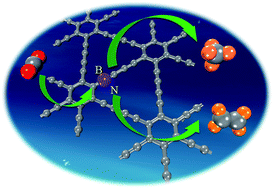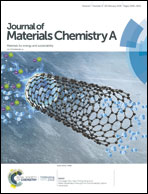Metal-free graphdiyne doped with sp-hybridized boron and nitrogen atoms at acetylenic sites for high-efficiency electroreduction of CO2 to CH4 and C2H4†
Abstract
Carbon dioxide electrochemical reduction (CO2ER) to useful fuels and chemicals under ambient conditions provides an intriguing picture for resolving energy security and environmental issues, which mainly relies on metal-based electrocatalysts, but the emerging doped carbon-based materials hold great promise as metal-free alternatives. Here, by means of density functional theory (DFT) computations, the potential of the experimentally available doped graphdiyne (GDY) with boron (B) and nitrogen (N) atoms as the metal-free CO2ER electrocatalyst was systematically explored. Our results revealed that these doped GDYs exhibit extremely high stability due to their high cohesive energies. Interestingly, the GDYs doped with sp-hybridized B and N at their acetylenic sites exhibit quite high-electrocatalytic activity for the conversion of CO2 to CH4 and (especially) C2H4 with a low limiting potential of about −0.60 V, which is attributed to their high electrical conductivity, preferable catalytic sites (sp-hybridized dopant), and low free energy for CO2 activation. Thus, by carefully tailoring the dopant sites of B and N atoms, the doped GDY can be utilized as the metal-free CO2ER catalyst with high-efficiency for the production of C1 and C2 species, which provides a new avenue to advance sustainable CO2 conversion.



 Please wait while we load your content...
Please wait while we load your content...